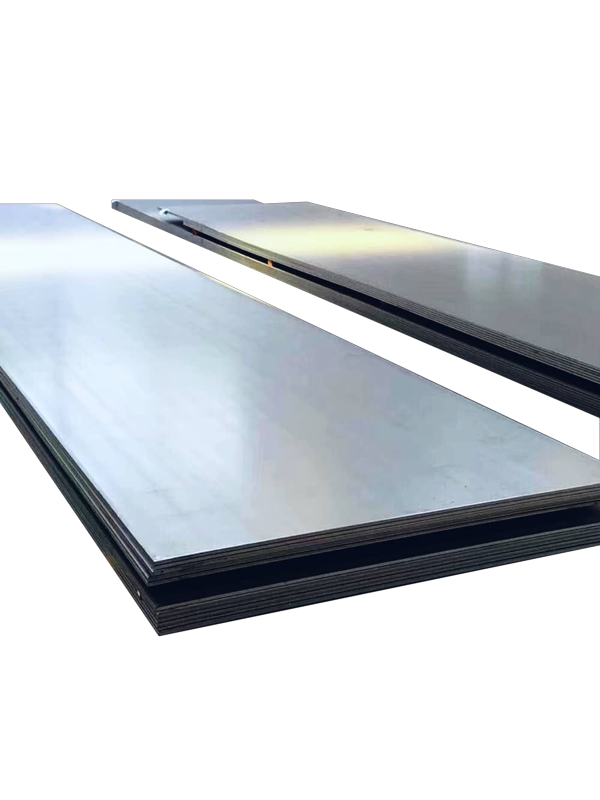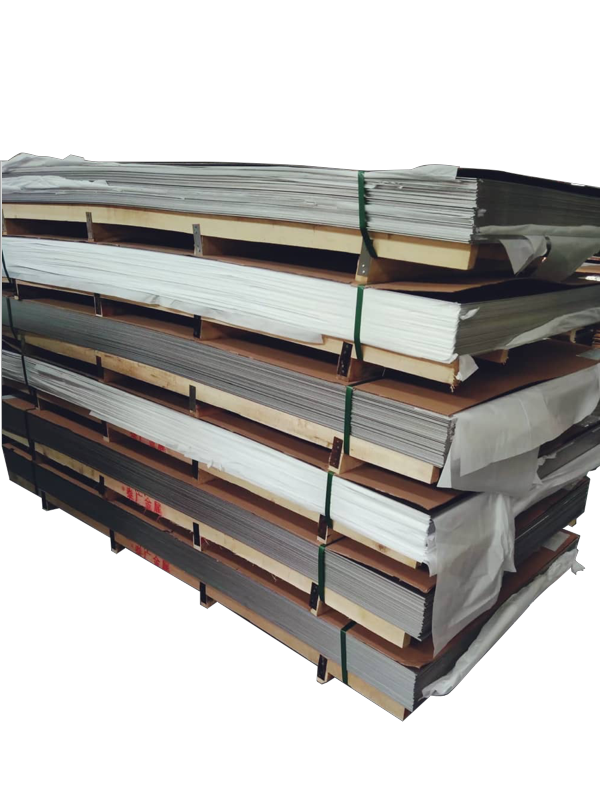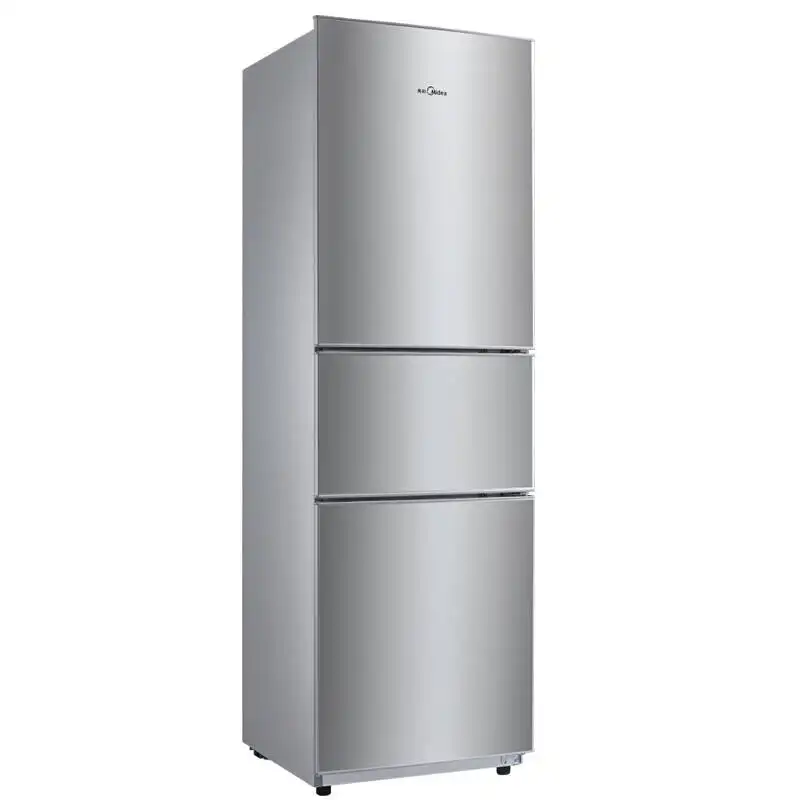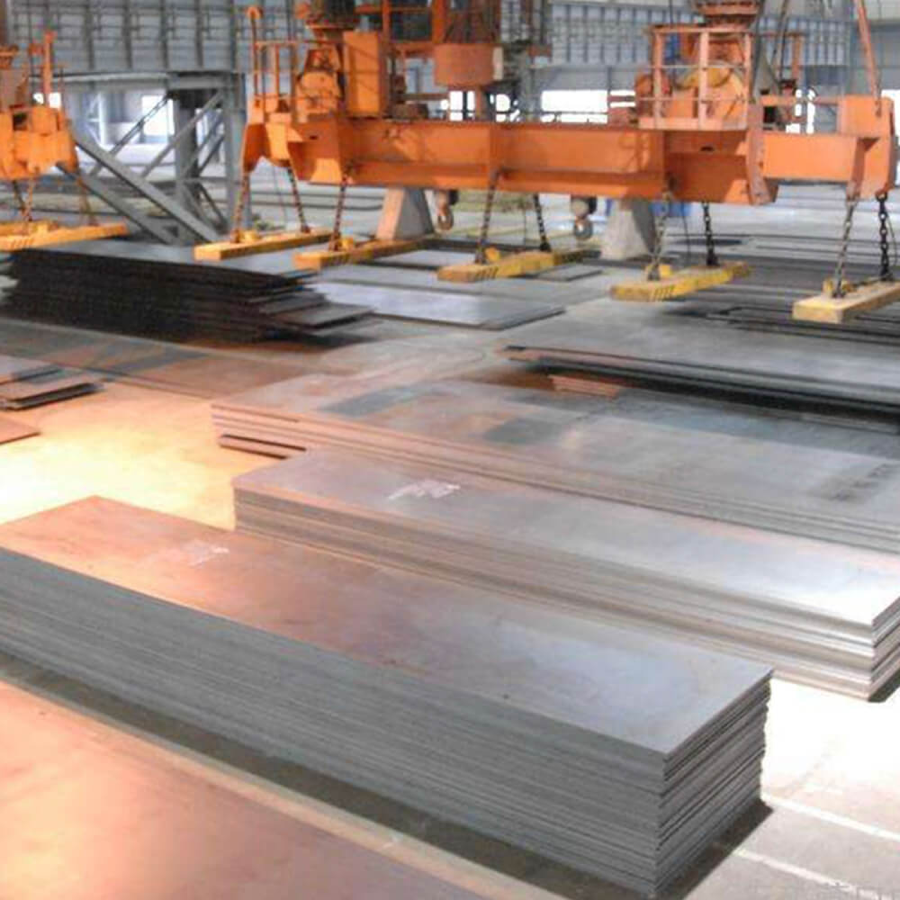Hot-rolled steel sheet and cold-rolled steel sheet
Hot-rolled steel sheets are, by definition, difficult to deform at room temperature and difficult to process. Generally, they are heated to 1100-1250 °C for rolling. This rolling process is called hot rolling. The temperature of the hot-rolled sheet is high, so the deformation resistance is small, and a large amount of deformation can be achieved. Taking the rolling of steel plate as an example, the thickness of a continuous casting slab is generally about 230mm, and after rough rolling and finishing rolling the final thickness is 1-20mm. At the same time, due to the small width-to-thickness ratio of the steel plate, the dimensional accuracy requirements are relatively low, and the plate shape problem is not easy to occur, and the main control is to control the crown. For those with requirements on the structure, it is generally realized by controlled rolling and controlled cooling, that is, controlling the opening temperature, finishing rolling temperature, and coiling temperature of finishing rolling to control the microstructure and mechanical properties of the strip.
Cold rolling is a steel sheet in which the steel sheet is further thinned to a target thickness below the recrystallization temperature under room temperature conditions. Compared with hot rolled steel sheet, the thickness of cold-rolled steel is more accurate, and the surface is smooth and beautiful.
Characteristics of Hot-Rolled Steel Sheets
Hot-rolled steel sheets are produced through a manufacturing process that involves rolling steel at high temperatures. This process gives hot-rolled steel sheets distinct characteristics that make them suitable for various applications. Here are some key characteristics of hot-rolled steel sheets:
Surface Finish: Hot-rolled steel sheets have a rough and scaled surface texture. This surface is a result of the steel being exposed to high temperatures during the rolling process. The scale, also known as the mill scale, consists of iron oxides and adheres to the surface of the steel.
Dimensional Accuracy: Hot-rolled steel sheets are known for their relatively less precise dimensional tolerances compared to cold-rolled sheets. Due to the manufacturing process, there may be variations in thickness and width across the sheet. However, these tolerances are generally within acceptable industry standards.
Structural Strength: Hot-rolled steel sheets possess excellent structural strength. The high temperatures during rolling cause the steel to undergo recrystallization, resulting in a microstructure with larger grain sizes. This grain structure enhances the overall strength and durability of the steel.
Malleability: Produced by steel product suppliers, hot-rolled steel sheets are highly malleable, meaning they can be easily shaped and formed without fracturing. This characteristic makes them suitable for applications that require extensive shapings, such as structural components, pipes, and welded constructions.

Characteristics of Cold-Rolled Steel Sheets
Cold-rolled steel sheets are produced through a manufacturing process that involves rolling steel at room temperature. This process imparts unique characteristics to cold-rolled steel sheets, making them ideal for various applications. Let's explore some key characteristics of cold-rolled steel sheets:
Surface Finish: Cold-rolled steel sheets have a smooth and polished surface finish. The rolling process at room temperature allows for greater control over surface quality, resulting in a clean and uniform appearance. The absence of mill scale gives cold-rolled sheets a visually appealing and consistent surface.
Dimensional Accuracy: Cold-rolled steel sheets are known for their high dimensional precision. The process involves multiple rolling passes, which can achieve tighter thickness tolerances and more consistent width throughout the sheet. This dimensional accuracy makes cold-rolled sheets suitable for applications that require precise and uniform thickness, such as automotive body panels and appliances.
Increased Hardness and Strength: Cold-rolling imparts increased hardness and strength to the steel sheets. The reduction in thickness during the process refines the grain structure, resulting in a higher density of grains. This denser grain structure contributes to improved mechanical properties, including higher tensile strength and hardness.
Improved Flatness: Cold-rolled steel sheets exhibit excellent flatness due to the controlled rolling process. The uniform thickness and surface finish minimize the occurrence of waviness or buckling, ensuring the sheets lay flat and straight. This characteristic is crucial for applications where flatness is a critical requirement, such as electronic components and precision parts.

Advantages of Hot-Rolled and Cold-Rolled Steel Sheets
Both hot-rolled and cold-rolled steel sheets offer distinct advantages depending on the application and requirements. Understanding these advantages will help you make an informed choice when selecting the appropriate type of China steel product for your specific needs. Let's explore the advantages of hot-rolled and cold-rolled steel sheets:
Advantages of Hot-Rolled Steel Sheets:
Cost-Effectiveness: Hot-rolled steel sheets are generally more cost-effective compared to cold-rolled sheets. The simpler manufacturing process, fewer production steps, and lower energy requirements contribute to their competitive pricing, making them a budget-friendly option for various projects.
Structural Strength: Hot-rolled steel sheets are known for their exceptional structural strength. The recrystallization process during hot rolling creates larger grain sizes, enhancing the overall strength and durability of the steel. This advantage makes hot-rolled sheets suitable for applications that require robust structural support.
Advantages of Cold-Rolled Steel Sheets:
Superior Surface Finish: Cold-rolled steel sheets have a smooth and polished surface finish, free from mill scale. This advantage makes them visually appealing and suitable for applications where aesthetics and surface quality are important, such as automotive body panels, appliances, and decorative components.
Dimensional Precision: Cold-rolled steel sheets offer excellent dimensional accuracy and uniform thickness. The controlled rolling process at room temperature ensures tight tolerances and consistent width throughout the sheet. This advantage makes cold-rolled sheets ideal for applications that require precise and uniform thickness, enabling seamless integration with other components.
Both hot-rolled and cold-rolled steel sheets offer distinct advantages, and the choice between them depends on the specific requirements of your project. Consider factors such as cost, structural strength, malleability, surface finish, dimensional precision, and application needs to make an informed decision that aligns with your project goals.

The difference between hot-rolled steel sheet and cold-rolled steel sheet
1. Appearance and surface quality: Since the cold plate is obtained after the cold rolling process of the hot-rolled steel sheet, and some surface finishing will be carried out at the same time, the cold plate has a specific heat in terms of surface quality (such as surface roughness). The plate comes well, so if there is a higher requirement for the coating quality of the product such as subsequent painting, the cold plate is generally selected. In addition, the hot plate is divided into a pickling plate and a non-pickling plate. The surface of the pickling plate has a normal metallic color because it has been pickled, but the surface is not as high as the cold plate because it is not cold-rolled. The surface of the non-pickling plate usually has the oxide layer, the color is black, or there is a black layer of iron tetroxide, which is generally said to have been roasted, and if the storage environment is not good, it usually has some embroidery.
2. Performance: In general, the mechanical properties of hot-rolled steel sheets and cold-rolled steel sheets are considered to be indistinguishable in engineering. Although cold sheets have a certain degree of work hardening in the process of cold rolling, (but does not rule out strict requirements on mechanical properties. The yield strength of cold rolled stainless steel sheet in coil is usually slightly higher than that of hot plates, and the surface hardness is also higher, depending on the degree of annealing of cold-rolled plates. But no matter how annealed, the strength of the cold plate is higher than that of the hot plate.
3. Forming performance: Since the performance of cold and hot plates is basically not too different, the influencing factors of forming performance depend on the difference in surface quality. Cold-rolled steel sheets have a better forming appearance than hot rolled steel sheets.

Applications of Hot-Rolled and Cold-Rolled Steel Sheets
Applications of Hot-Rolled Steel Sheets:
Construction: Hot-rolled steel sheets are widely used in the construction industry. They are employed in the fabrication of structural components, including beams, columns, and girders, due to their excellent structural strength and load-bearing capabilities.
Manufacturing and Machinery: Hot-rolled steel sheets find extensive application in the manufacturing sector. They are utilized in the production of heavy machinery, such as cranes, earthmoving equipment, and agricultural machinery, where their robustness and durability are crucial.
Applications of Cold-Rolled Steel Sheets:
Automotive Industry: Cold-rolled steel sheets have significant applications in the automotive sector. They are used in the production of automotive body panels, chassis components, and structural reinforcements. The superior surface finish, dimensional precision, and formability of cold-rolled sheets make them ideal for achieving the desired aesthetics and precise fit in automobiles.
Appliances: Cold-rolled steel sheets are widely employed in the manufacturing of appliances such as refrigerators, washing machines, ovens, and air conditioners. The smooth surface finish, dimensional accuracy, and corrosion resistance of cold-rolled sheets contribute to the overall quality and durability of these products.